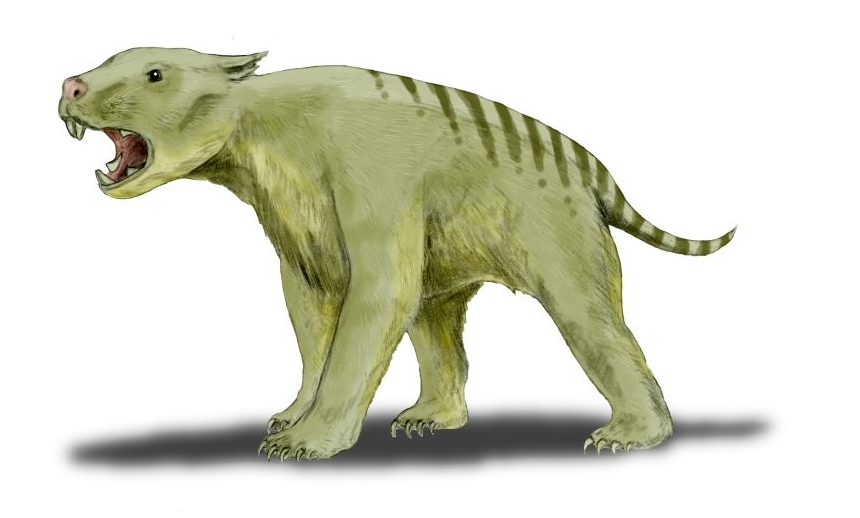The Former King of the Outback
The Former King of the Outback
Name: Thylacoleo Carnifex
Length: 5 ft
Weight: 223-287 lbs
Time Period: Pleistocene (6th Age of Mammals / Ice Age), 1.6 – .046 million years ago
Location of Discovery: Nullabor Plain, Australia.
Thylacoleo, commonly known as the Marsupial Lion, is the largest mammal predator known to have ever lived in Australia. Like many of Australia’s native mammals, it is a Diprotodontid, which means it is part of the family of marsupials that includes kangaroos, koalas, wombats, possums, and their extinct relatives. Of these, the wombat is the closest living relative of the Marsupial Lion, and they share a bearlike build, including the ability to sit back on the hind feet (a trait which kangaroos also possess). One of its most interesting adaptations was its unique tooth pattern, with two exceptionally large, meat cleaver like premolar teeth. The Marsupial Lion also possessed an extremely powerful bite force, which, relative to its size, was the most powerful of any known mammal. These features combine to make it an extremely efficient hunter of big game. Like most large mammal predators today, it preferred to strike the neck. But, unlike big cats and wild dogs that may spend several minutes suffocating their prey, the Marsupial Lion could crack the neck in a single brutal bite. However, this hunting style mean that it was specialized to feeding on only the largest of marsupial species. These species were driven to extinction because the beginning of the last and coldest stage of the Ice Age coincided closely with the arrival of primitive humans in Australia. Deprived of its only food source, the marsupial lion likewise went extinct in short order.

Whitney • Oct 1, 2015 at 2:18 pm
Kool